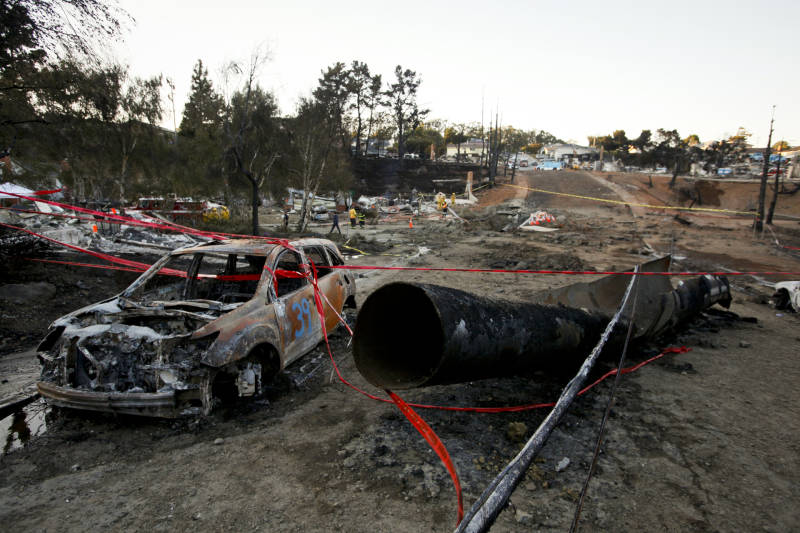In the past two decades, the government has recorded more than 2,000 accidents on gas transmission lines across the U.S., resulting in 46 deaths, 181 injuries and $1.8 billion in damages.
The AP obtained details on Thursday's proposal in advance of its public release. Complying would cost companies an estimated $597 million to $711 million over the next 15 years, according to federal and industry officials. Benefits primarily from hundreds of avoided accidents would total $3.2 billion to $4.7 billion over the same period.
Transportation Secretary Anthony Foxx said the changes represent commonsense measures needed to handle a dramatic increase in domestic natural gas production in recent years.
They would bring under federal regulation for the first time roughly 70,000 miles of "gathering lines" that transport fuel from gas fields to storage areas or into transmission systems, officials said.
"The significant growth in the nation's production, usage and commercialization of natural gas is placing unprecedented demands on the nation's pipeline system," Foxx said in a statement provided to the AP.
The rules would extend pressure-testing to include lines built before 1970, a step the National Transportation Safety Board has long recommended.
Some companies already have been testing older lines voluntarily, said Marie Therese Dominguez, administrator for the Transportation Department's Pipeline and Hazardous Materials Safety Administration. But Dominguez said the agency has identified 7,400 miles of pipe that have never been assessed for problems.
"I really do think this is going to lead to a higher level of safety," she said. "It's going to reduce the number of incidents related to gas transmission."
Don Santa, president of Interstate Natural Gas Association of America, said the industry group would look closely at the proposal to see if it is consistent with a voluntary program its members adopted in 2012.
Pipeline safety advocates said the proposal was long overdue and addresses major gaps in government oversight of the industry. That includes expanding inspection and repair rules to include rural areas where companies to date largely have been self-regulated.
But Carl Weimer with the Bellingham, Washington-based Pipeline Safety Trust said no requirement for automatic shut-off valves was a glaring shortcoming.
"We saw in San Bruno, when someone has to jump in a truck and drive through rush-hour traffic to manually shut off a valve, how much longer that left that blowtorch to blow into that neighborhood," Weimer said.
His comments were echoed by U.S. Rep. Jackie Speier, whose San Francisco-area district includes San Bruno. She expressed disappointment that rules were so long in the making. Speier added that action on automatic valves needs to come quickly, and the government must protect public safety, "not industry profit margins."
Installing automatic valves would cost $100,000 to $1 million each, according to estimates from utility officials.
Dominguez said the use of automatic shut-off valves remained a high priority for the agency and would be addressed separately. She could not offer a timeline.

